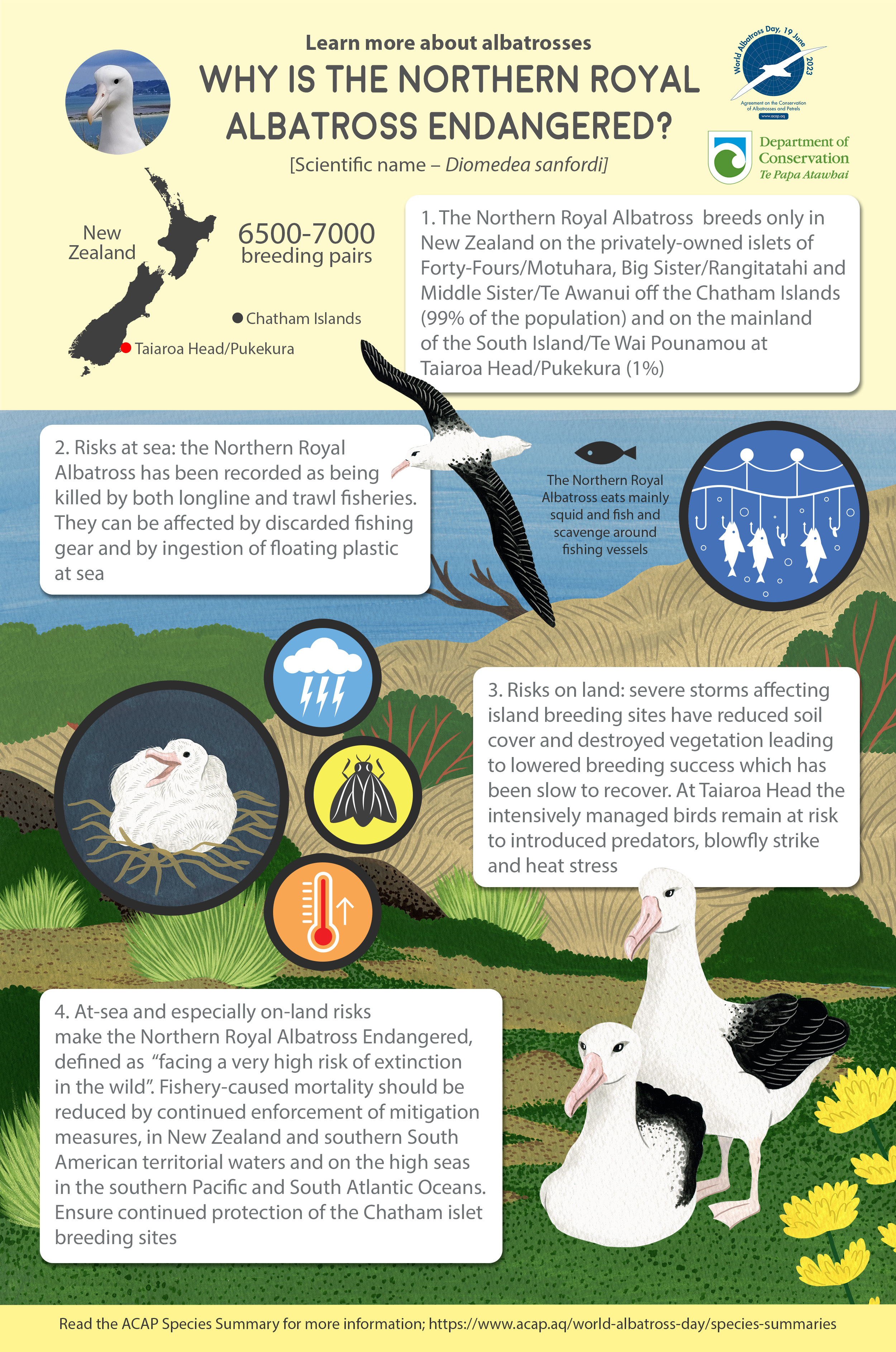
Graeme Elliott ONZM prepares albatross colour bands in the field hut on Antipodes Island
Graeme Peter Elliott ONZM has been made an Officer of the New Zealand Order of Merit in the New Year Honours List for 2024 for services to wildlife conservation.
His citation follows:
“Dr Graeme Elliott has been employed with the Department of Conservation (DOC) and predecessor organisations since the 1980s and has volunteered his own time to furthering ecological research and conservation initiatives.
Dr Elliott’s research has significantly expanded New Zealand’s knowledge of its endangered birds and the threats to them. He has been a member of the National Kakapo Management Group and Recovery Group since 1995. Since 2003 he has been on the Whio (blue duck), Orange-fronted kākāriki and Mohua (Yellowhead) Recovery Groups, principally as a Science Advisor. His PhD research identified seeding patterns that increased predator numbers and threatened hole-nesting Mohua and parakeet species, which led to improved predator control to protect threatened birds. He is regarded as a cornerstone of DOC’s large-scale predator control programmes, with his research informing the approach applied in South Island forests and adapted for North Island forests, leading to an increase in the numbers of forest birds and bats. He and his partner have monitored the health of albatross populations in the subantarctic annually since 1991, much of it in their own time. Through this, Dr Elliott and his partner discovered both Gibson’s and Antipodean albatross populations were in a critical condition and have worked to alert others and to find solutions.”

Kath Walker (left) and Graeme Elliott display their banner supporting the inaugural World Albatross Day on 19 June 2020 on Antipodes Island, fittingly photobombed by an Antipodean Albatross
Graeme, along with his partner Kath Walker ONZM, is a long-time supporter of the Albatross and Petrel Agreement with regular news and photographs coming from Antipodes and Auckland Islands on their globally Endangered and nationally Naturally Uncommon Antipodean Albatrosses Diomedea antipodensis. Kath became an Officer of the New Zealand Order of Merit in the 2023 Honours List (click here).
 A matched pair: Kath Walker ONZM and Graeme Elliott ONZM on Antipodes Island flank an Antipodean Albatross
A matched pair: Kath Walker ONZM and Graeme Elliott ONZM on Antipodes Island flank an Antipodean Albatross
The New Zealand Order of Merit was instituted by Royal Warrant in May 1996. The Order is awarded to those “who in any field of endeavour, have rendered meritorious service to the Crown and the nation or who have become distinguished by their eminence, talents, contributions, or other merits”.
Read more here.
A previous post to ACAP Latest News lists marine ornithologists who have received awards from the Australian, New Zealand and United Kingdom honours lists.
John Cooper, Emeritus Information Officer, Agreement on the Conservation of Albatrosses and Petrels, 09 January 2024





 English
English  Français
Français  Español
Español  Photograph by Scott Pearson
Photograph by Scott Pearson

 A matched pair: Kath Walker ONZM and Graeme Elliott ONZM on Antipodes Island flank an Antipodean Albatross
A matched pair: Kath Walker ONZM and Graeme Elliott ONZM on Antipodes Island flank an Antipodean Albatross
 A Buller's Albatross in a rather fetching festive hat. Photograph by Javier Quiñones
A Buller's Albatross in a rather fetching festive hat. Photograph by Javier Quiñones